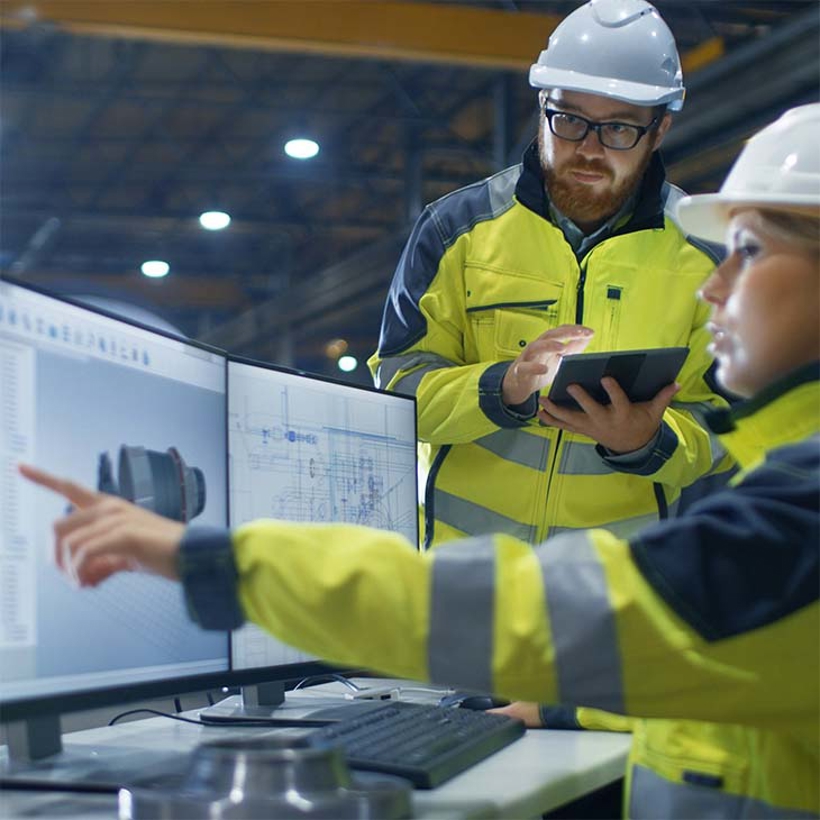Human centred design (HCD) is the best way to embrace human factors when engineering systems, maximising investment, safety and through-life performance. We’ll help you address the people issues that matter, from concept of operations onwards.
Overview
Any system that relies on personnel to operate and maintain it presents three main challenges. You need to protect the system from human error, while at the same time maximising its performance and safeguarding your people’s well-being.
Human centred design (HCD) is your answer to taking the human perspective. From concept of operations and throughout the design stages, we’ll help you develop and implement this solution. We’ve supported organisations across the maritime, defence, energy and rail industries as they integrate their human factors into their design process. Before a system is switched on, you can make sure you’ve fully considered your people. You’ll know you’ve optimised operational effectiveness and safety by getting the design of your system right.
What we offer
To help with human centred design, we use a proven approach called human systems integration (HSI), also known as human factors integration or human factors engineering (HFE). This gives a structured way – an organising framework – to identify and address all your human factor concerns within engineering design and safety management. There’s an additional advantage. The approach has a supporting management strategy, so human factor activities are correctly delivered on time as part of engineering and safety management procedures.
Your system may be an established one or in its infancy. We’re experienced in providing early human factors support, where a concept is novel or user requirements aren’t yet defined.
Main service areas
Optimising the performance of tasks through workspace and interface design solutions.
Considering the functions between operators and technology, the feasibility of workloads and team make-ups.
Specifying job roles in detail, alongside the required skills and aptitudes of system operators and maintainers.
Developing training plans to make sure an entire workforce can perform their assigned tasks.
Identifying and controlling hazards that present risks to operators and maintainers. Typically, this involves occupational health and safety management.
Identifying and controlling risk because of human error when operating and maintaining a system. Typically, this involves major accident risk management.
How we support you
For an idea of the processes we use, alongside a conventional approach to systems engineering, take a look at the following diagram.
Tools and methods
For practical system solutions, you have a choice of tools and methods. We’ll help you select the right ones and combine this with innovative thinking, making sure you get the most value. You can see examples of HCD tools, methods and activities in the following table.
What are the benefits?
Human centred design is routinely used today by organisations with critical infrastructure. And it’s growing increasingly valuable. Modern operations are pushing human capabilities by adopting new technologies, involving larger, complex assets and entering more extreme environments. A shortage of skills and changing staff populations also add to the challenges.
The main benefits include:
- maximising design investment – avoiding unnecessary, costly system redesign or modifications because important human factors were missed or not fully considered
- safeguarding personnel and increasing operational safety
- optimising system performance and reducing through-life cost.
HCD also helps with your project’s issues register and safety case. During the design process, we’ll identify human factor issues, resolve them cost-effectively and reduce their risk by developing and maintaining an issues or human-risk register. This work will support the project’s safety case and, where relevant, hazard log.
Why choose LR?
To your next system, we bring proven, leading experience in human centred design. This is across a range of high-risk industries, so you gain relevant learning and best practices from a mix of sectors. We place a great deal of emphasis on human error and fallibility as a major issue when operating and maintaining systems. We’ll help you identify where mistakes are likely to occur in your proposed system. We’ll also use human performance modelling. This approach means we can explore the influence of task design on operator performance and evaluate how different design options will affect the user.
You’ll find our specialist support wherever you need us, globally. From concept through to operation and beyond, we’ll help you – and your people – proceed with confidence.






